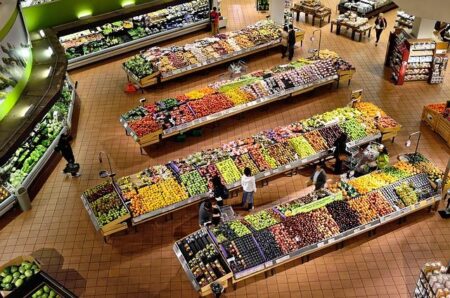China has imposed temporary anti-dumping and countervailing duties on Canadian canola imports, a move quickly condemned by Ottawa as a devastating blow to bilateral trade. The unexpected decision escalates ongoing tensions between the two nations amid broader geopolitical strains, dealing what Canadian officials have described as a “gut punch” to their vital agricultural sector. This article examines the implications of Beijing’s latest tariffs, the responses from Canadian authorities and industry stakeholders, and the potential impact on the global canola market.
China Imposes Temporary Duties on Canadian Canola Raising Trade Tensions
China’s recent decision to impose temporary anti-dumping duties on Canadian canola imports marks a significant escalation in the ongoing trade discord between the two nations. The duties, levied at rates ranging from 8% to over 40%, have stunned the Canadian agricultural sector, which depends heavily on the Chinese market for canola exports. Industry experts describe the move as a “gut punch” to Canada’s economy, potentially disrupting global canola supply chains and raising prices worldwide.
The backlash from Ottawa was swift, with Canadian officials condemning the tariffs as unjustified and protectionist measures. Key factors contributing to this dispute include:
- Allegations of dumping: China claims Canadian canola is being sold below market value, harming local producers.
- Political tensions: Recent diplomatic frictions have intensified economic retaliation.
- Supply chain impact: Farmers and exporters face uncertainty amidst fluctuating demand and market access.
| Country | Export Volume (MT) | Tariff Rate |
|---|---|---|
| Canada | 5,200,000 | 8% – 44.6% |
| China (Domestic Supply) | 3,000,000 | 0% |
| Other Exporters | 1,500,000 | 0% – 10% |
Impact on Canadian Agriculture and Export Markets An In-Depth Analysis
The imposition of temporary duties by China on Canadian canola represents a significant disruption to one of Canada’s key agricultural export markets. Canola, accounting for over 40% of Canada’s total crop exports, has long been a cornerstone of the nation’s economy, especially in the provinces of Alberta, Saskatchewan, and Manitoba. With China previously absorbing nearly 60% of Canadian canola exports, the newly implemented tariffs threaten to destabilize pricing, reduce farm incomes, and force producers to seek alternative markets amid uncertain global demand.
Farmers and exporters now face a multifaceted challenge, including logistical hurdles and inventory backlogs. Below is a snapshot of the potential impact on Canadian canola exports in 2024, reflecting possible price shifts and market redistribution:
| Metric | Pre-Duty (2023) | Projected Post-Duty (2024) |
|---|---|---|
| Canola Export Volume (Million Tonnes) | 6.2 | 4.1 |
| Average Export Price (CAD/tonne) | $550 | $460 |
| Market Share: China (%) | 58 | 20 |
| Key Alternative Markets | – |
|
In response, industry stakeholders are calling for swift government intervention, including diplomatic engagement and support measures to safeguard farmers’ livelihoods. Diversification of export markets is increasingly viewed as critical, yet shifting established trade patterns involves significant costs and time. The ripple effects are expected to extend beyond agriculture, impacting related sectors such as processing, transportation, and rural economies across Canada.
Strategic Recommendations for Canadian Producers to Navigate Emerging Challenges
Canadian canola producers must urgently diversify export markets to reduce dependency on China, whose temporary duties have caused significant disruption. Expanding into emerging markets such as Southeast Asia and the Middle East could offset losses and stabilize revenues. Stakeholders should enhance domestic supply chain efficiency and explore value-added products to increase resilience. Building strategic alliances with international buyers, investing in marketing campaigns, and focusing on sustainable production practices will strengthen competitiveness in the global arena.
Adoption of innovative risk management tools can soften the blow from sudden policy changes abroad. Producers should leverage futures contracts and crop insurance options to hedge against price volatility. Collaboration between government bodies and industry associations is critical to advocate for fair trade practices and support adaptive strategies. The table below summarizes essential steps for Canadian producers to navigate this turbulent period:
| Strategy | Action Points | Expected Outcome |
|---|---|---|
| Market Diversification | Engage buyers in ASEAN & Middle East | Reduced market risk |
| Value Addition | Develop canola-based food & industrial products | Higher profit margins |
| Risk Management | Certainly! Here is the completed version of the table row for “Risk Management” to match the style and content of the previous rows: | |
| Risk Management | Use futures contracts and crop insurance | Mitigated financial losses |




